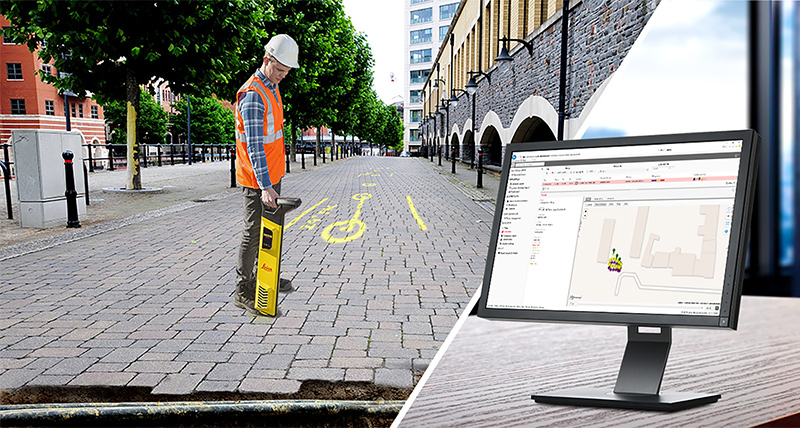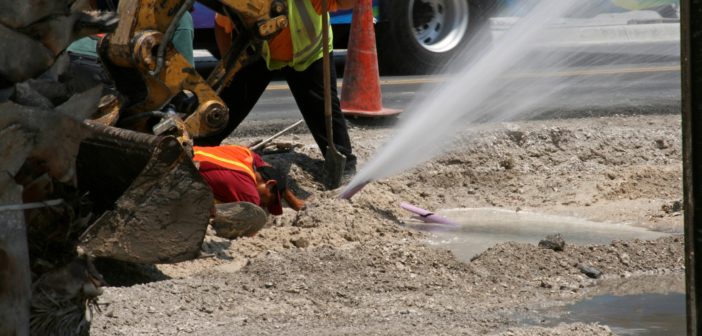One of the biggest health and safety dangers that utility sector workers encounter when working below ground is accidental contact with electrical cables, water or gas pipelines. Without the right preparations, these utility strikes – also known as service strikes or hits – can occur with alarming regularity and can result in serious injury or even death.
Smart Cities are growing at a blistering pace, relying on larger and more complex utility networks to help stimulate their rapid growth. Conversely, ageing cities struggle to maintain the existing infrastructure or find space for new installations.
To keep vital services in operation, repair and modernisation programs must undertake vast amounts of street work and excavate holes to reach the buried utilities. Executing any excavation will inevitably bring site workers near underground utilities. Identifying the exact location of all buried utilities before and during any excavation process is a critical precautionary step.
Safe working practices
Numerous utility strikes occur in the U.K. every year, exposing workers to deadly risks, including electrocution and explosions. The issue is disruptive and dangerous as well as costly: huge sums of money can be spent to rectify the damage caused by misjudged digging, while at the very least, incidents of this nature – including hits on undetected water pipes – cause delays and service impacts for customers. Many utility strikes occur when teams do not follow safe working practices, fail to review utility plans, or do not use appropriate detection equipment.
Several government standards have been developed to improve the quality of utility data and reduce the risk of a utility strike, including:
- Desktop utility records to collate existing utility records
- Site reconnaissance to validate existing records
- Geophysical survey to detect underground utilities
- Verify the location of utilities during excavation
Utility strikes are caused by failing to undertake one or more of these steps. To prevent this from happening we encourage you to follow these five recommendations:

1. Preparation
Avoiding strikes requires better preparation before the start of work on site. This preparation includes establishing the best possible mapping of the excavation area. As well, all excavation teams need to undertake a desktop survey collating existing records provided by owners and operators on the utilities. However, you should never rely on utility plans as the only source of information. Always conduct a geophysical site survey to verify the records.
2. Site verification
A physical site reconnaissance should be completed to check the utility records and assess if there are any inconsistencies or conflicts.

3. Avoiding utilities strikes
Before excavation, a geophysical survey should be commissioned to detect, identify and verify the location of all utilities. A common technique for searching utilities is the utilisation of an Electro-Magnetic Locator (EML). With an EML or cable locator (Leica DDSMART), a surveyor can detect and trace the utility using the magnetic fields. This process is called passive locating. Locating electrical cables using a cable locator on its own will only allow the operator to detect utilities with live current. To detect all services, a signal transmitter (Leica DA) should be used with the locator. This small portable unit induces a specific artificial signal to a cable or pipe, which can be traced by the cable locator. This process is called active locating. By undertaking this second process, most buried utilities can be located, thus reducing utility strikes by 45%.
4. Verify the location of buried utilities
When undertaking an excavation, buried utilities may pass along or through the working site. When a utility is located within the excavation area, trial holes can be dug to carefully expose and mark its position. Commonly, only cable locators are issued to field crews, while signal transmitters are classified as an extra piece of equipment, often left in the back of vans and not used.
The technology built within the Leica DDSMART cable locators can record and log the instruments’ activity. The instrument records the signal transmitter during the survey, enabling data to be analysed through the Leica DX Shield software to determine if the recommended guidelines are followed and to evaluate staff training requirements.
In addition, to detect and avoid the plastic and non-metallic pipes or confirming excavation areas are clear of utilities, you should have at hand a GPR, like the Leica DSX. With this utility detection solution, you have a more efficient, robust and easy-to-use GPR system to contractors and users by detecting utilities on-site and easily checking data quality in real-time. When the Leica DSX is used in conjunction with Leica Geosystems MC1 machine control software, the chances of utility damage are reduced.
5. Importance of training your crew
A lack of training produces additional high-level risks to excavation teams. Often utility strikes are caused by operators who have not received adequate training. At Leica Geosystems, we take training very seriously, and we offer a range of training programs to teaching operators the correct methods to locate underground utilities. With Leica Geosystems Detection Campus we provide you with a thorough insight into our extensive portfolio of detection solutions.
Learn more about utility strikes by downloading our whitepaper.















